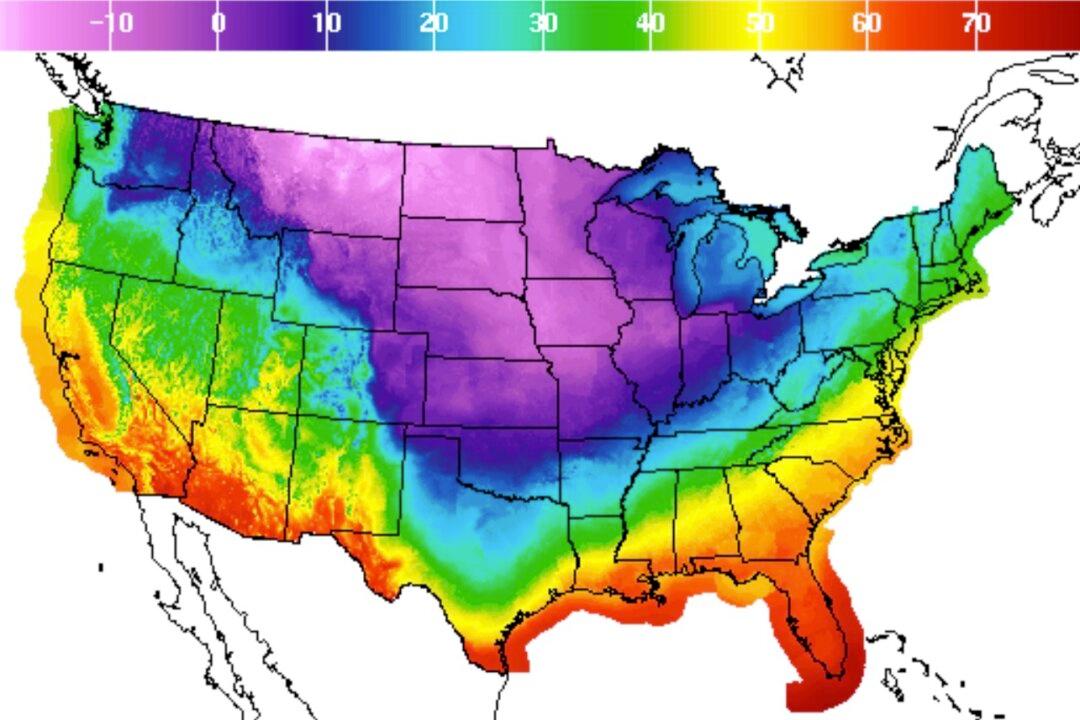A blast of arctic air descending over the continental United States will see temperatures drop to the minus 30s early this week as winter makes a late but unmistakable arrival.
After a week of winter storms, another low-pressure system in the northern Pacific is clashing with a frigid Arctic air mass that is pushing south over the continent from western Canada and is expected to bring the coldest conditions yet this season.





